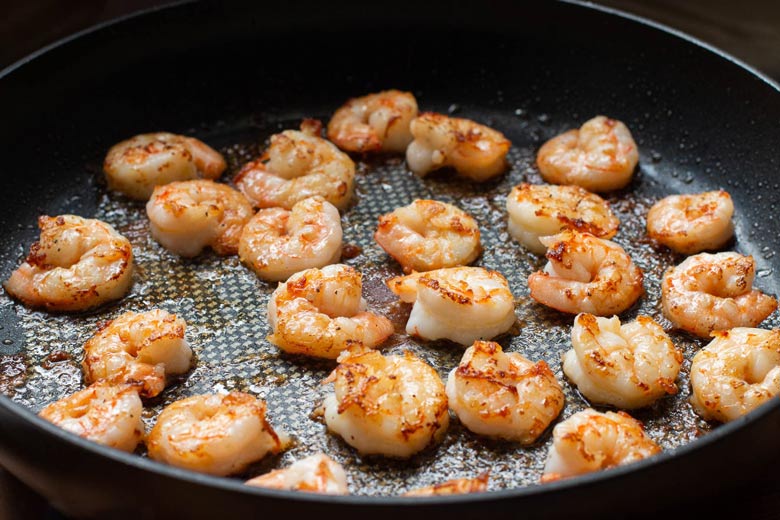How to Know if Shrimp is Cooked: A Comprehensive Guide
Shrimp is a versatile and delicious seafood that can be prepared in a variety of ways, from grilling and sautéing to boiling and baking. However, getting the perfect cook on shrimp can be a bit of a challenge. Undercooked shrimp can be unsafe to eat, while overcooked shrimp might become quite tough and rubbery. If you’re not sure how to tell when shrimp is fully cooked, you’re not alone. Many home cooks struggle with this issue, and it’s easy to understand why. Shrimp can be deceiving, as it often changes color as it cooks, making it hard to know when it’s done.Fortunately, there are several simple ways to determine if shrimp is fully cooked. By using these techniques, you can ensure that the shrimp is perfectly cooked every time, no matter how you’re preparing it. In this guide, we’ll explore the different ways to tell if shrimp is fully cooked, including visual cues, texture, and cooking times. We’ll also share some tips for avoiding common mistakes and ensuring that the shrimp turns out tender, juicy, and flavorful.
How to Cook Shrimp
Shrimp may be cooked in a variety of different ways, depending on your preference and the recipe you’re using. Here are some common methods for cooking shrimp:
- Grilling: To grill shrimp, preheat your grill to medium to high temperature and lightly oil the grates. Thread the shrimp on skewers (if desired) and brush them with a mixture of olive oil, minced garlic, and your favorite seasonings. Grill the shrimp for 2 to 3 minutes each side, until they’re slightly charred and pink in color.
- Sautéing: To sauté shrimp, heat a tablespoon of olive oil or butter in a large skillet over medium-high heat. Add the shrimp and cook for 2 to 3 minutes each side, until they’re pink and slightly browned. Add minced garlic, chopped herbs, or other seasonings as desired.
- Boiling: To boil shrimp, bring a large pot of salted water to a boil. Add the shrimp and cook for 2-3 minutes, until they’re opaque and pink. Drain the shrimp and rinse them under cold water to stop the cooking process.
- Steaming: To steam shrimp, bring a pot of water to a boil and use a steamer basket. Add the shrimp to the basket and cover the pot. Steam the shrimp for 2-3 minutes, until they’re pink and slightly firm to the touch.
No matter which method you use, be sure to season the shrimp with salt, pepper, and other herbs or spices to enhance their flavor. And remember to check for doneness using the methods outlined below to avoid undercooking or overcooking the shrimp. With a little practice, you can cook perfect shrimp every time!
How to Tell If Your Shrimp Is Fully Cooked?
There are several ways to tell if shrimp is fully cooked, and the method you choose may depend on how you’re preparing the shrimp.
Visual Cues
One of the easiest ways to tell if shrimp is fully cooked is to look at its color. Raw shrimp is gray or translucent, but cooked shrimp turns pink or white. If the shrimp is gray or translucent, it needs more time to cook. If it’s turned completely pink or white, it’s likely overcooked.
Texture
Cooked shrimp is firm and slightly springy, but not rubbery. If the shrimp feels mushy or slimy, it’s likely undercooked. If it’s tough or chewy, it’s likely overcooked.
Cooking Time
The cooking time for shrimp can vary depending on the cooking method and the size. As a general rule, shrimp ought to be cooked for 2 to 3 minutes each side if you’re grilling or sautéing, or 3-4 minutes if you’re boiling or steaming.
Internal Temperature
If you have a meat thermometer, you can use it to check the internal temperature of the shrimp. Cooked shrimp should reach a minimum internal temperature of 145°F (63°C).No matter which method you use to check for doneness, it’s important to not overcook your shrimp, as this can cause it to become rubbery and tough. With a little practice and attention to detail, you can master the art of cooking shrimp and enjoy perfectly cooked, delicious seafood every time.
Dangers of Undercooked Shrimp
Undercooked or raw shrimp can pose several health risks, as it could harbor viruses and bacteria. Some of the most common dangers of undercooked shrimp include:
Food Poisoning
Shrimp can be a source of various foodborne illnesses, such as salmonella, listeria, and vibriosis. Eating undercooked shrimp can lead to symptoms like nausea, vomiting, diarrhea, and abdominal pain.
Parasitic Infections
Certain parasites, such as roundworms and tapeworms, can be present in raw or undercooked shrimp. Consuming these parasites can lead to intestinal infections and other health issues.
Allergic Reactions
Some people may be allergic to shrimp or shellfish, and eating undercooked shrimp can trigger an allergic reaction. Symptoms may include hives, itching, swelling, and difficulty breathing.To avoid these dangers, it’s important to cook shrimp thoroughly to an internal temperature of 145°F (63°C). If you’re not sure whether the shrimp is fully cooked, check for visual cues such as its color, texture, and cooking time.
Tips for Avoiding Common Mistakes
Cooking shrimp can be tricky, but by avoiding these common mistakes, you can ensure that the shrimp turns out perfectly every time:
Overcooking the Shrimp
Overcooked shrimp can become tough, rubbery, and dry. To avoid this, keep a close eye on the shrimp as it cooks and remove it from the heat as soon as it’s opaque and slightly pink.
Crowding the Pan
If you add too many shrimp to the pan at once, they’ll steam rather than sear. This can lead to uneven cooking and a soggy texture. Cook the shrimp in batches if necessary, or use a larger pan.
Not Seasoning Properly
Shrimp can be bland if not seasoned properly. Be sure to season the shrimp with salt, pepper, and any other desired spices or herbs before cooking. You can also marinate the shrimp in a flavorful mixture for added taste.
Skipping the Deveining
While not strictly necessary, deveining the shrimp can improve both the appearance and texture of the final dish. Use a sharp knife or a pair of kitchen shears to remove the dark vein that runs along the back of the shrimp.By following these tips and using the methods outlined above to check for doneness, you can cook shrimp that is juicy, tender, and packed with flavor. Shrimp is a versatile and delicious seafood that can be enjoyed in a variety of dishes, from appetizers to main courses.
FAQ Section
Q1: How can I tell if shrimp is fully cooked?A1: You can tell if shrimp is fully cooked by looking for visual cues such as a pink or white color, a firm and slightly springy texture, and a curved “C” shape. The shrimp should also reach an internal temperature of 145°F (63°C).
Q2: Is it safe to eat undercooked shrimp?A2: No, it is not safe to eat undercooked shrimp, as it can harbor bacteria and viruses that can cause foodborne illnesses. Always cook shrimp thoroughly to an internal temperature of 145°F (63°C).
Q3: How long does it take to cook shrimp?A3: The cooking time for shrimp can vary depending on the method and size, but as a general rule, shrimp should be cooked for 2 to 3 minutes each side when grilling or sautéing, or 3-4 minutes when boiling or steaming.
Q4: Can I reheat cooked shrimp?A4: Yes, you can reheat cooked shrimp, but be careful not to overcook it. Heat the shrimp gently in a skillet or microwave until it’s heated through, being careful not to let it become tough or rubbery.
Q5: What’s the best way to store cooked shrimp?A5: Cooked shrimp should be stored in an airtight container in the refrigerator for up to 3 days. For longer storage, you can freeze cooked shrimp for up to 3 months.
Conclusion
Cooking shrimp can be a quick and easy way to prepare a delicious and nutritious meal. However, it’s important to cook shrimp properly to ensure food safety and avoid common mistakes such as undercooking or overcooking.By following the tips and guidelines mentioned above, you can cook shrimp that is juicy, tender, and packed with flavor. Remember to use visual cues, texture, cooking times, and internal temperature to determine when the shrimp is fully cooked. And always season the shrimp with salt, pepper, and other herbs or spices to enhance its natural flavor.With a little practice and attention to detail, you can master the art of cooking shrimp and enjoy perfectly cooked, delicious seafood every time. So fire up the grill, heat up the skillet, or bring a pot of water to a boil, and get ready to enjoy some perfectly cooked shrimp!For more information on food safety and proper cooking temperatures, you can refer to the USDA Food Safety and Inspection Service website.


